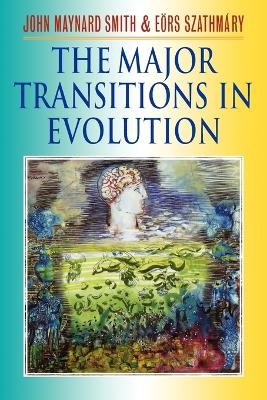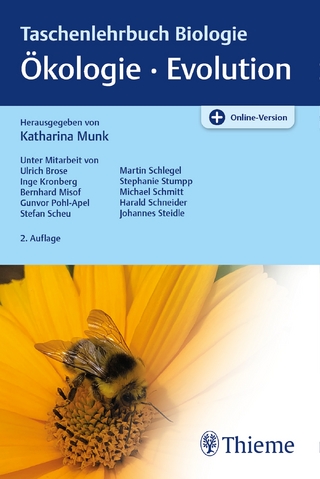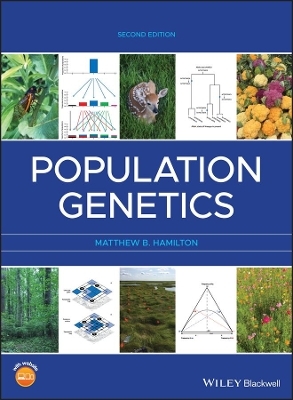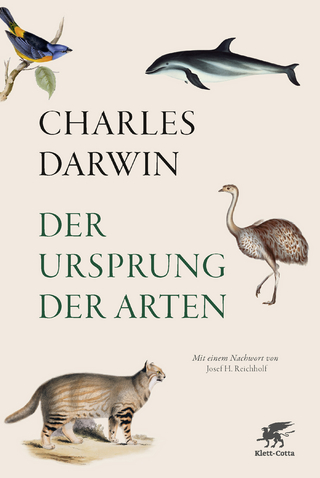
The Major Transitions in Evolution
Seiten
1997
Oxford University Press (Verlag)
978-0-19-850294-4 (ISBN)
Oxford University Press (Verlag)
978-0-19-850294-4 (ISBN)
During evolution, there have been several major changes in the way genetic information is organized and transmitted. These transitions include the origin of life itself, the first eukaryotic cells, reproduction by sexual means, and more. This illustrated book discusses these major transitions and their implications, along with diagrams.
During evolution, there have been several major changes in the way that genetic information is organized and transmitted from one generation to the next. These transitions include the origin of life itself, the first eukaryotic cells, reproduction by sexual means, the appearance of multicellular plants and animals, the emergence of cooperation and of animal societies, and the unique language ability of humans. This is the first book to discuss all of these major transitions. In discussing such a wide range of topics in one volume, the authors are able to highlight the similarities between different transitions - for example, between the union of replicating molecules to form chromosomes and of cells to form multicellular organisms. The authors also show how an understanding of one transition sheds light on others. A common theme in the book is that entities that could replicate independently before the transition can replicate afterwards only as part of a larger whole. Why, then, does selection between entities at the lower level not disrupt selection at the higher level? In answering this question, the authors offer an explanation for the evolution of cooperation at all levels of complexity. Written in a clear style, and illustrated with many original diagrams, this book can be read with enjoyment by anyone with an undergraduate training in the biological sciences. It will be ideal for advanced discussion groups on evolution. Although the content ranges widely from molecular biology to linguistics and from intragenomic conflict to insect societies, no detailed knowledge of any of these topics is required. Mathematical models are clearly explained, and equations and formulae are kept to a minimum.
During evolution, there have been several major changes in the way that genetic information is organized and transmitted from one generation to the next. These transitions include the origin of life itself, the first eukaryotic cells, reproduction by sexual means, the appearance of multicellular plants and animals, the emergence of cooperation and of animal societies, and the unique language ability of humans. This is the first book to discuss all of these major transitions. In discussing such a wide range of topics in one volume, the authors are able to highlight the similarities between different transitions - for example, between the union of replicating molecules to form chromosomes and of cells to form multicellular organisms. The authors also show how an understanding of one transition sheds light on others. A common theme in the book is that entities that could replicate independently before the transition can replicate afterwards only as part of a larger whole. Why, then, does selection between entities at the lower level not disrupt selection at the higher level? In answering this question, the authors offer an explanation for the evolution of cooperation at all levels of complexity. Written in a clear style, and illustrated with many original diagrams, this book can be read with enjoyment by anyone with an undergraduate training in the biological sciences. It will be ideal for advanced discussion groups on evolution. Although the content ranges widely from molecular biology to linguistics and from intragenomic conflict to insect societies, no detailed knowledge of any of these topics is required. Mathematical models are clearly explained, and equations and formulae are kept to a minimum.
John Maynard Smith (1920-2004) was Emeritus Professor of Biology in the University of Sussex. Eors Szathmáry is at the Institute for Advanced Study, Budapest.
List of Tables ; Preface ; 1. Introduction ; 2. What is Life? ; 3. Chemical evolution ; 4. The evolution of templates ; 5. The chicken and egg problem ; 6. The origin of translation and the genetic code ; 7. The origin of protocells ; 8. The origin of eukaryotes ; 9. The origin of sex and the nature of species ; 10. Intragenomic conflict ; 11. Symbiosis ; 12. Development in simple organisms ; 13. Gene regulation and cell heredity ; 14. The development of spatial patterns ; 15. Development and evolution ; 16. The origins of societies ; 17. The origins of language ; References ; Index
| Erscheint lt. Verlag | 30.10.1997 |
|---|---|
| Zusatzinfo | line figures, tables |
| Verlagsort | Oxford |
| Sprache | englisch |
| Maße | 154 x 233 mm |
| Gewicht | 542 g |
| Themenwelt | Naturwissenschaften ► Biologie ► Evolution |
| Naturwissenschaften ► Biologie ► Genetik / Molekularbiologie | |
| Naturwissenschaften ► Biologie ► Ökologie / Naturschutz | |
| Naturwissenschaften ► Biologie ► Zoologie | |
| ISBN-10 | 0-19-850294-X / 019850294X |
| ISBN-13 | 978-0-19-850294-4 / 9780198502944 |
| Zustand | Neuware |
| Informationen gemäß Produktsicherheitsverordnung (GPSR) | |
| Haben Sie eine Frage zum Produkt? |
Mehr entdecken
aus dem Bereich
aus dem Bereich
Komplette Neuübersetzung. Mit einem Nachwort von Josef H. Reichholf.
Buch | Hardcover (2018)
Klett-Cotta (Verlag)
48,00 €


